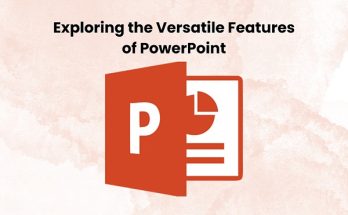As the end of third-party cookies draws nearer, it has never been more important for digital marketers to evaluate their methods and plan for a cookieless future. Essentially enabling web users to have more control over their data and their privacy when searching online, a cookieless web should be seen as a positive step for consumers and marketers alike.
That being said, with many advertisers having been overly reliant on cookies to target users for a long time, the shift to cookieless tracking is certain to be a challenge.
So, what is the answer? Many believe it to be creative and contextual advertising.
How does contextual advertising work?
Contextual advertising works by placing ads designed to target a specific audience on relevant websites. Through the use of machine learning, a contextual advertising tool uses the information available such as keywords and media channels to understand the context of a web page. This allows you to provide relevant and engaging communication without the need for cookies.
Furthermore, contextual tools will also provide you with positive areas to link your advertising to and any negative ones to avoid.
This automation will not only save you a lot of time and money, but it will also enable you to ensure your ad is only placed in relevant places.
Why is contextual advertising the perfect solution to a cookieless web?
Once the web goes cookie-free, you will be left with two options: substitute cookies for another technology that enables them to keep addressability on the web or to switch to privacy-first targeting strategies such as contextual advertising.
The issue with the former solution is that no technology, however clever, will be a success if it fails to respect the privacy of today’s users.
Contextual advertising, on the other hand, allows you to target with scale and precision without the need for any data from your customers. Rather than focus on the behavioral patterns of online users, it concerns itself with the creative, context and environments.
Furthermore, if you need any more convincing about the importance of contextual advertising in the cookieless web, then think about the receptiveness of consumers when they see a contextual ad. For example, if a user is reading about new Nike trainers, he is likely to be interested in sports, a healthy lifestyle, or sporting products. Therefore, as an advertiser, you can also assume that an ad about sports clothes would be relevant to them.
In terms of brand safety, the use of machine learning and AI-powered technologies have provided marketers with a more accurate understanding of content. This means that brands are now able to target their audiences in a more brand-safe way. For example, they can avoid sensitive content that may have a negative impression on their brand and focus only on positive connotations.
How to plan effective digital marketing campaigns in a cookie-less web?
The programmatic and display advertising industry needs to start planning for the changes that are inevitably coming.
Below are our top tips for advertising in a world without cookies:
1. Apply personalization tactics
Personalization has never been more important than it is today, with 72% of consumers stating that they only shop with brands that personalize their experience. Therefore, programmatic creatives need to be designed with the user in mind rather than algorithms.
2. Build first-party data
When third-party cookies are completely wiped out, companies should focus on acquiring first-party data from other sources such as CRM platforms and advertiser’s websites.
3. Use contextual advertising
As already discussed, contextual advertising enables you to place an ad on web pages based on the content of these pages. When combined with high-impact creatives such as html5 banner ads, this form of targeting can allow you to engage with your target audience in a highly effective and completely safe way.
4. Develop a white list
By developing a white list, advertisers can target relevant domains, channels, and apps, which may lead to related ads being populated on the website. When combined with ongoing optimization of the website, this can significantly help improve conversion rates.
If you are looking for a new programmatic advertising company, choose one that is ready to embrace a cookieless web rather than one that is shying away from it. The future is cookieless, and you need to be ready.
Author Bio
PadSquad is a digital advertising company wholly focused on high-impact creativity. We believe in humanizing the advertising experience, speaking to consumers as humans, not users. Our mission is to enable Brands to connect to people through more memorable advertising that stimulates the senses and inspires action. PadSquad is led by founder Daniel Meehan, an entrepreneur and change agent who began in publishing where it’s critical to deliver readers what they crave. Formerly, Dan was the founder and CEO of Haven Home Media, LLC, the first vertical content network in the Home & Garden category which sold to Reader’s Digest Association in 2011.
Also Read About: Is the Freelance Life Right for You? Here’s How to Know




